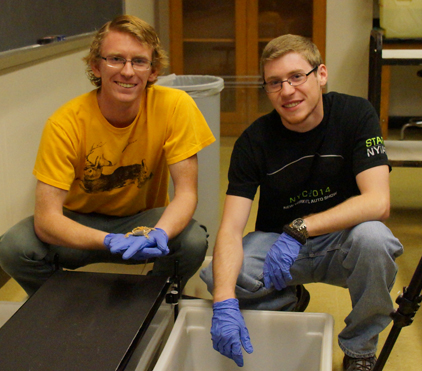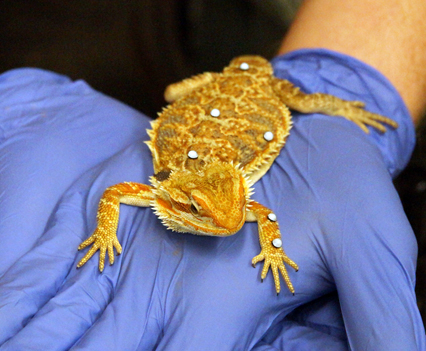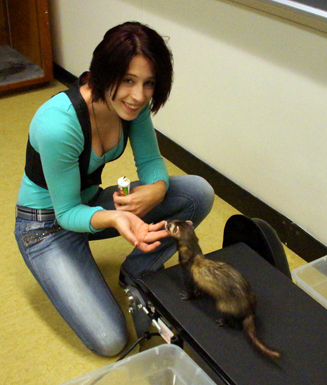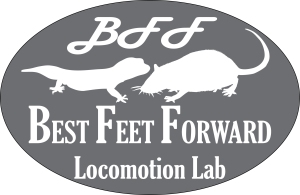Given the positive feedback and interest in our POV of a ferret running on a treadmill, we’ve upped the ante here at the Best Feet Forward lab. We proudly present two more GoPro POV movies of our magnificent animals running for science. Would you like to see a running Bearded Dragon (Pogona vitticeps) and lab rat (Rattus norvegicus)? Of course you would.
Above you see Greenbeard running for science. We’re shaking a tasty bucket of crickets off-camera to get him to run.
Above you see one of our lab rats, Frank, also running for science. If you look closely you can see the reflective beads attached to him that we follow with the infrared OptiTrack camera system.
Bridget Kuhlman is once again thanked for her brilliant camera work.




